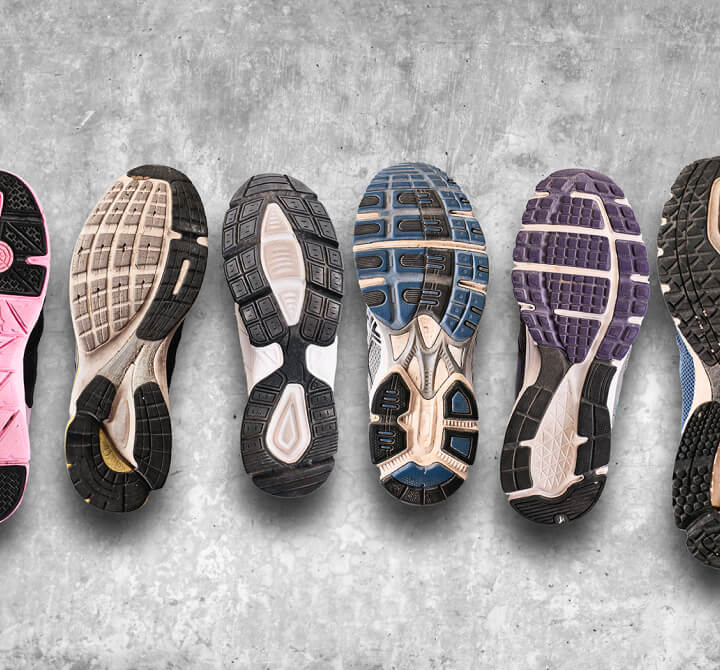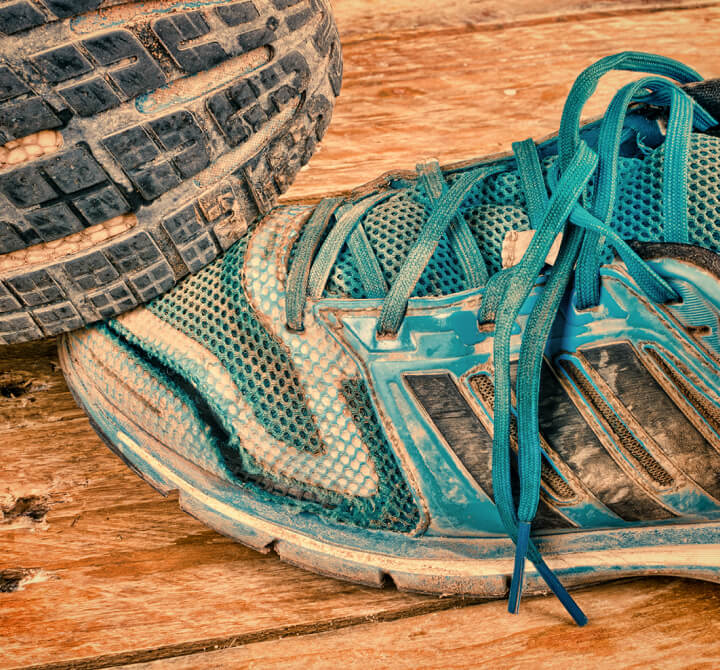How Long Do Running Shoes Last & When to Replace Them

Whether you run city marathons or on quiet trails before the sun is even up, there comes a time when every runner should retire their beloved pair of running shoes — or at least downgrade them to lawn-mowing shoes. But saying goodbye to your running shoes never comes easy.
So how long do running shoes last, and when should you replace them? In this guide, we surveyed our Academy experts and caught up with Brooks Running New Orleans Running Guru, Jessica Jones, to help you uncover the answer to these questions and more!
Key Takeaways
- How long do running shoes last? Most running shoes last 300-500 miles, but this depends on whether you’re an avid or casual runner.
- How Often Should You Replace Running Shoes? Check out our chart to learn more about how often you need to replace your shoes based on the type of shoe you wear, the number of miles you run, and the intensity of your workouts.
- Discover the signs your running shoes need to be replaced. Worn-down soles, foot pain, and weak midsoles are all clear signs you need new shoes.
- Learn how to make shoes last longer so you can increase your shoes’ lifespan with our top tips! An easy way to upkeep them is to only use and wear them when you’re running.
How Long Do Running Shoes Last?
Running shoes last roughly 6 months or 300-500 miles. But you’ll find that you should replace most running shoes every 400 miles on average. Check out our tips for ways to keep track of your mileage and why you need to replace your running shoes:
-
If you run a particular trail or loop every week, you can calculate your miles by wearing a smartwatch that logs your steps. You can measure the distance with Google Maps!
-
After a certain point, the midsole foam in running shoes starts to wear out. Your joints are subjected to more impact, and your running shoes lose their springiness as a result.
| How Often to Replace Running Shoes Breakdown | |||||
|---|---|---|---|---|---|
| Running Shoe Type | When to Replace with Regular Use | Replace After Amount of Miles (General) | Casual Runners | High-Intensity Runners | |
| Running Shoes | 4-6 months | 300 to 500 miles | If you’re running less than 10 miles/month, you can replace your running shoes roughly every 10 months. | If you’re running anywhere from 21-30 miles/month, replace your running shoes around every 4 months. | |
| Trail Running Shoes | 6 months | 300 to 500 miles | If you trail run 8-10 miles/week, look to replace your trail running shoes every 6 months. | Avid trail runners (100 miles/month) need to replace their trail running shoes every 3-4 months. | |
| Walking Shoes | 10-12 months | 300 to 500 miles | If you walk roughly three hours/week, replace your walking shoes every 6-8 months. | If you’re walking roughly 100 miles/month, aim to replace your walking shoes every 3-6 months. | |
| Cross Training Shoes | 3-9 months | 300 to 500 miles | If you’re training in the gym 2-4 days/week, you can get a lot of mileage out of your cross-training shoes. Look to replace them every 8-9 months. Some may even last up to a year. | If you take HIIT boxing classes or another high-intensity workout 4-7 days/week, replace your cross-training shoes every 3-5 months. | |
“If you don’t keep track of mileage, opt to replace your shoes every 6 months. If you run less than 10-15 miles per week, then you might get a few more months of wear out of your shoes. At the very least, aim to buy new shoes at least once a year.”
— Jessica Jones, Brooks Running New Orleans Guru/Field Representative

Signs Your Running Shoes Need to Be Replaced
-
Worn Down Soles: Different parts of your shoes' soles wear down faster or slower over time depending on how you run. If you run heel to toe, for example, your running shoes will wear down around the heel and midfoot areas — toward the ball of your foot and toes. As this happens, you’ll start to lose tread and should look to replace your shoes.
-
Shoes Show Signs of Wear and Tear: From holes in the toe area to creases in your midsole, some signs of wear and tear are more obvious than others. Some runners choose to wear their running shoes into the ground. But be aware that this does compromise the shoe’s structure!
-
Weak Midsole: One way to test if you have a weak midsole is by bending your running shoe. If it sags rather than snaps back into shape, then you know it’s time to get a new pair of running shoes.
-
You’re Experiencing Pain: You might feel pain throughout your legs, hip, back, and feet. If you’ve worn your running shoes for a good while and have noticed pain in your shins or knees, chances are they are past their prime.
-
Inadequate Shock Absorption: Running in shoes with poor shock absorption causes you to feel every step you take. The cushioning may also feel flat, which contributes to poor support. You’ve probably put hundreds of miles on your running shoes, which means it’s time for a new pair.

How to Make Running Shoes Last Longer
Learn how to extend the life of your running shoes so you can enjoy using them for longer periods of time by incorporating some of our helpful tips:
-
Rotate Your Running Shoes: Buy two or more pairs of running shoes to switch between each run. You can use a shoe with better shock absorption for your recovery runs and stick with your go-to running shoe for covering long distances.
-
Take Care of Your Running Shoes: Treat your running shoes like royalty! Dry them out after every run so they retain their shape. Don’t leave your running shoes boiling inside a hot car all day. Overall, keep your running shoes clean so they stay in top condition.
-
Remove Your Shoes the Right Way: While you may be used to taking your shoes off by using the toe of your opposite foot to pull at your shoe’s heel, this can wear your shoe down faster. Simply bend down and unlace your shoes one at a time.
-
Use Your Shoes Solely for Running Don’t wear your shoes for anything other than running. Use walking shoes for walking, training shoes for the gym, etc. This can help extend the life of all of your shoes since they are all constructed to withstand different activities.
Have Fun Out There!
Shopping for new shoes can be a lengthy process that often falls to the bottom of your to-do list. But there’s nothing better than lacing up a pair of running shoes you feel comfortable and supported in.
Now you can feel confident knowing when to replace your old pair of running shoes so you can get back out on the road! To learn more tips, check out our Expert Advice articles.


